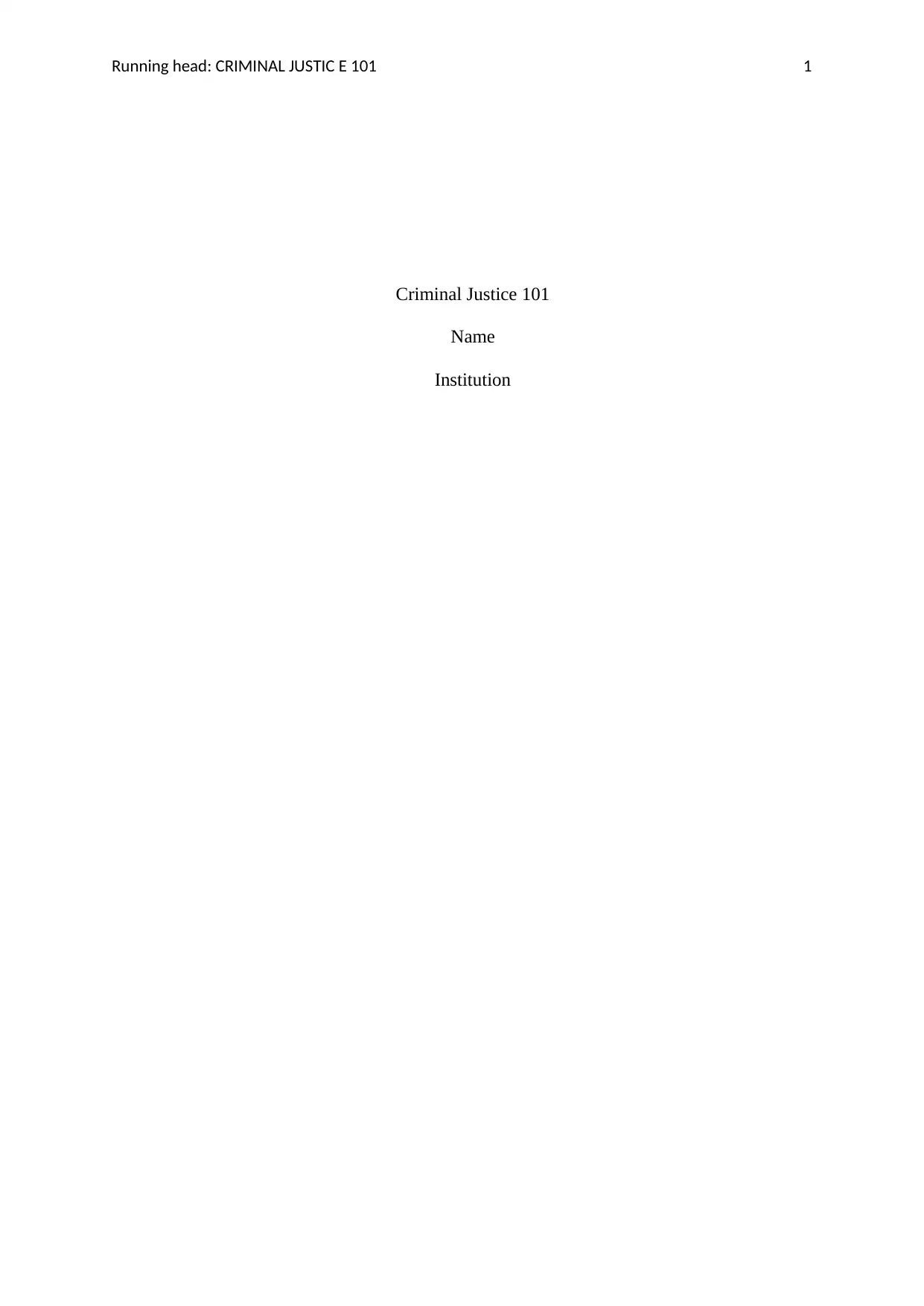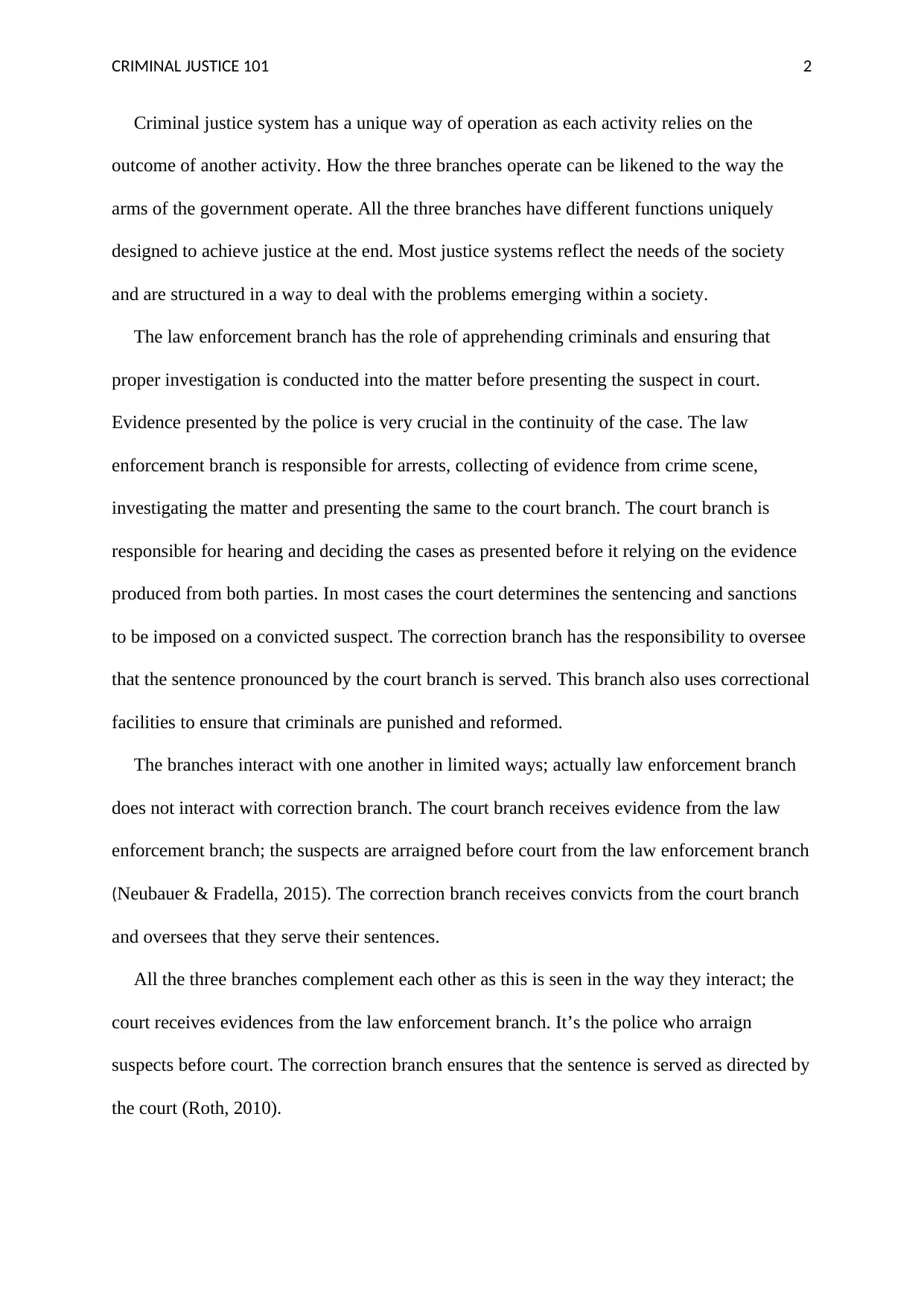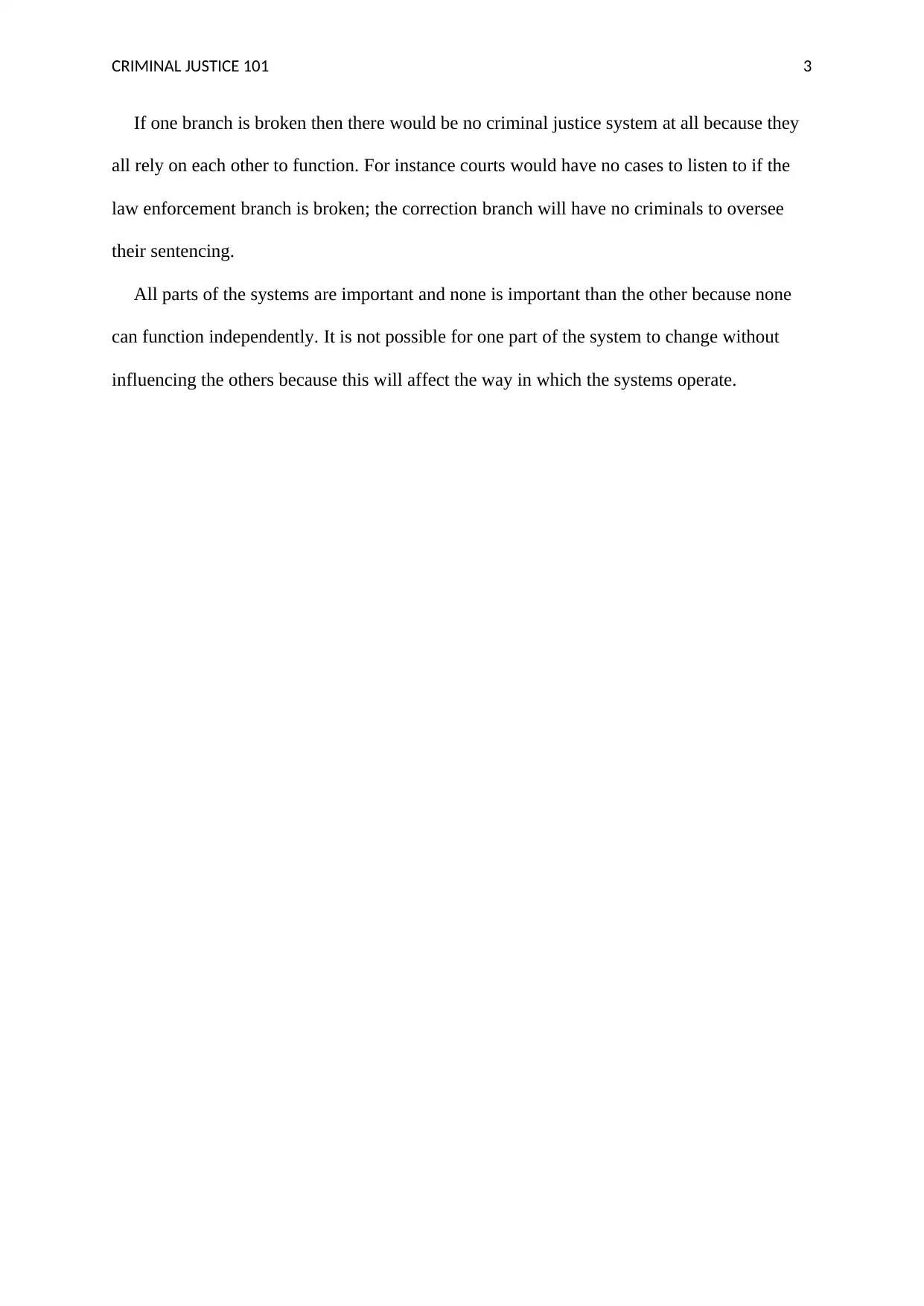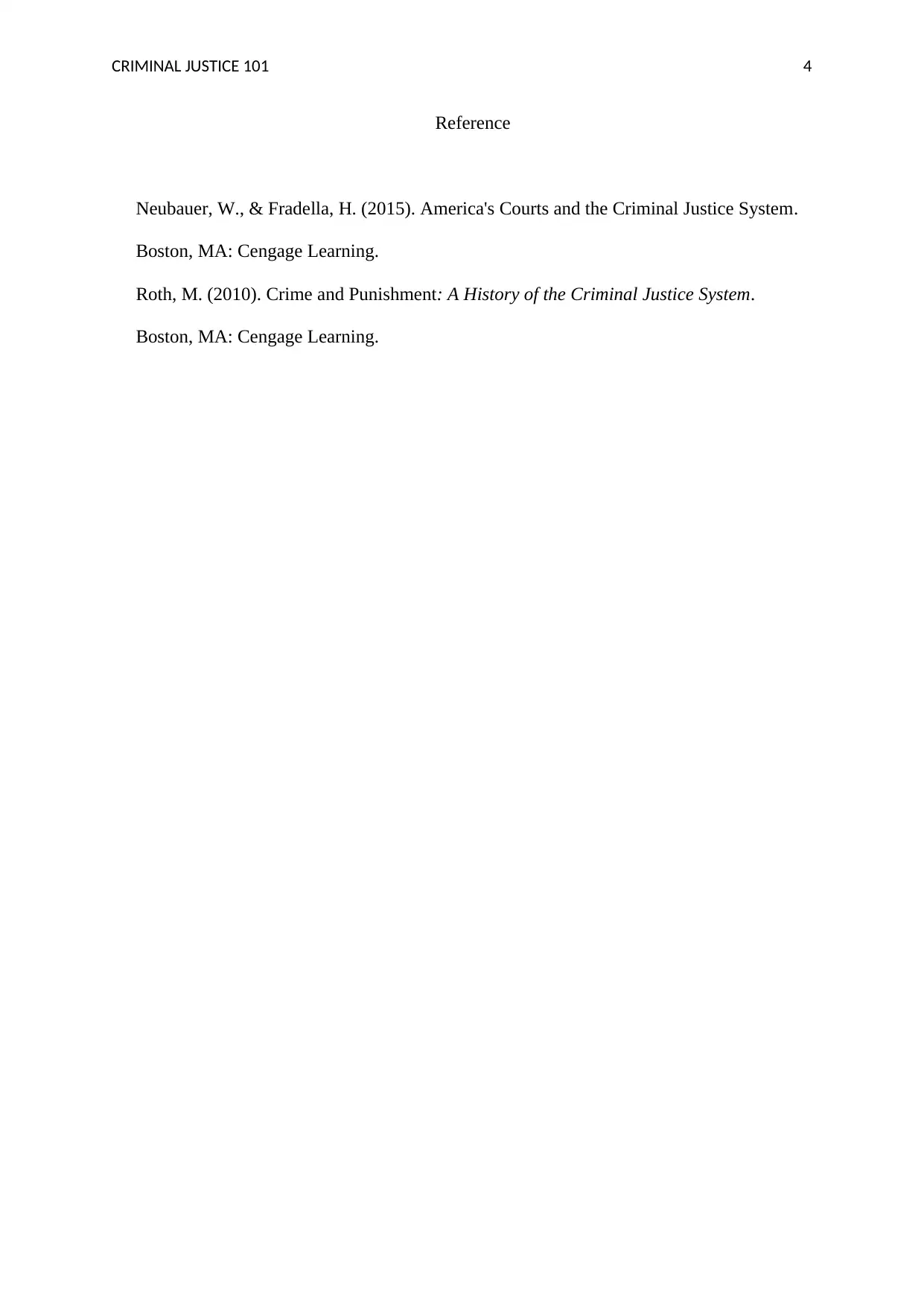Report on the Criminal Justice System Components and Interactions
VerifiedAdded on 2023/03/17
|4
|534
|95
Report
AI Summary
This report examines the criminal justice system, focusing on the roles and interactions of its three main branches: law enforcement, the courts, and corrections. The report highlights how each branch functions independently while also relying on the others to achieve justice. Law enforcement is responsible for apprehending criminals and gathering evidence, the courts adjudicate cases based on presented evidence, and corrections oversee the sentencing and rehabilitation of offenders. The report emphasizes the interconnectedness of these branches, illustrating how a breakdown in any one area would cripple the entire system. It also underscores the importance of each branch's role in maintaining a functional and effective criminal justice system, referencing key components like evidence presentation, sentencing, and correctional facilities. The report concludes by emphasizing the interdependence of these branches and the impact of changes within one on the others.
1 out of 4










![[object Object]](/_next/static/media/star-bottom.7253800d.svg)